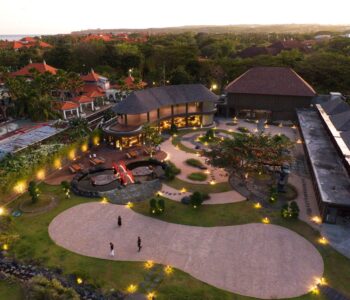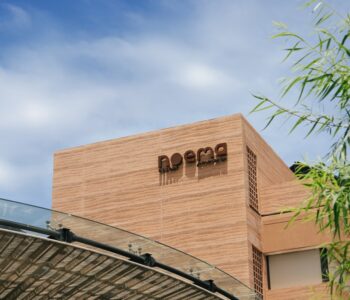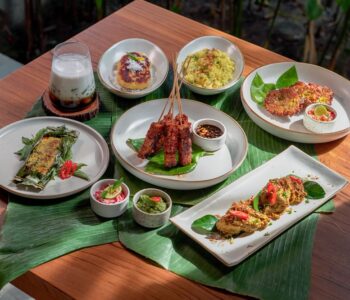Garuda, Indonesia’s symbol. Steeped in both legend, mythology and modern symbolism the Garuda bird (be it the God bird of myth or Javan Eagle of modern interpretation) holds an esteemed position in the eyes and hearts of Indonesian citizens. Here, our culture writer Jean Couteau brings us closer to the story of Garuda of ancient stories, and then to the birds development into a national icon. Enjoy.
Garuda: The Myth
At the time when gods and titans were united, tirelessly churning the oceans to produce amerta, their elixir of life and immortality, Garuda was still only an egg. This unhatched cosmic creature was the younger brother of Aruna the charioteer of the sun-god and son of Kasyapa, a cosmic seer, and one of his 29 wives, Winata. Garuda and Aruna were also the half brothers to 1000 cosmic snakes, the spawn of Kasyapa and other wife Kadru.

The story of Garuda started with an argument between Kadru and Winata, who disagreed on the colour of the tail of the cosmic horse Ucaisrawa, which had come out from the holy mountain at the same time as the amerta. Kadru claimed that the horse was white and black-tailed, whereas Winata insisted it was completely white. They eventually settled on a bet: whoever was proven wrong would become the other’s slave. But the cunning Kadru deceived Winata and had her children, the snakes, spray the white tail of the horse with their poison. Thus the tail turned black, making Winata Kadru’s slave just as Garuda’s egg was hatching.
When Garuda came to life, his glaring light filled the heavens in all directions. The gods themselves were filled with terror, fearing that the burning of the three worlds had come. Agni, the god of fire, knew better, reassuring his ethereal companions, “Oh you gods, the time has not yet come for my burning of the worlds. Doomsday is sill far away. The light you see is of Garuda, son of Kasyapa and saviour of worlds”.
Having found his enslaved mother, Garuda approached his half-brothers, the snakes, asking for a way to buy back his mother’s freedom. The snakes then said to him “The gods have churned the seas and produced amerta, the elixer of life. Obtain this for us and we shall free your mother.” Garuda agreed and went to his mother for advice. She told him, “Go forth to the island with the holy mountain that produced the amerta. Villains inhabit it; you must kill them and eat them, as they are to be your food during your quest. But beware; don’t kill the Brahmin, your father Kasyapa is also a Brahmin. Be confident: the god Bayu (energy) will look after your wings, the goddess Candra (moon) will look after your back, and the gods Agni (fire) and Angin (wind) will look after your head. They will all protect you.”
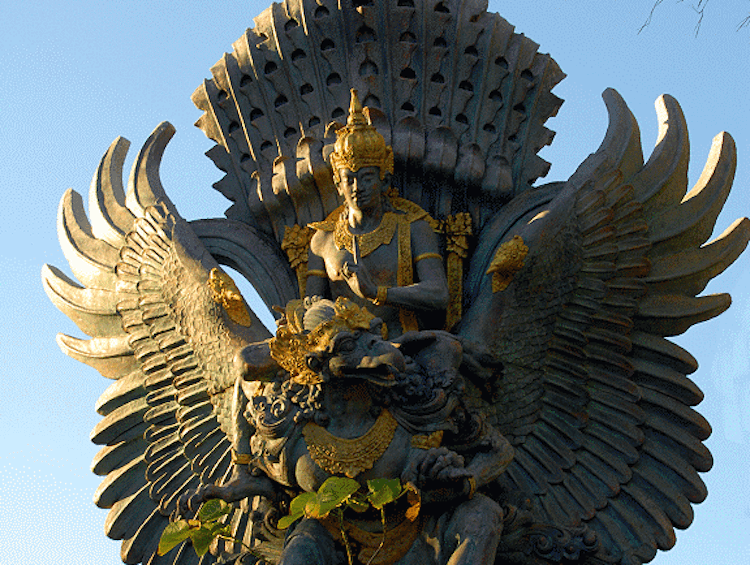
So Garuda left for his amerta quest. He was soon on a rampage, killing and eating villains, turtles, elephants. Continually fighting, he reached the peak of “Somaka”, source of the amerta, on the land of “Sangka” where he was confronted by the godly troops of Indra, headed by the king of the gods himself. Clawing and pecking, he defeated all of them. He then swooped over the sea, and collected water to put out the fire guarding the entrance to the amerta cave. There he had to fight his way against two guardian nagas (snakes), whom he killed and ate. At last, the amerta was his. But as he was returning, the god Wisnu saw him fleeing with the amerta and asked Garuda for a favour. The law during those primal times stated that when a favor was asked, it had to be granted. Wisnu demanded, “Oh Garuda you mighty bird, serve me as my vehicle, so that I may go wherever my duty of guardian of the world takes me”. So ever since, Garuda has been Wisnu’s vehicle. Yet, he had one more duty to fulfill: with the amerta in his claws, he took it to the snakes, and his mother Winata was released from slavery. But before giving it to his arch-enemies, he asked them to cleanse first by bathing. They agreed, but while they were away, god Indra came and stole back the amerta of life, which has remained ever since the property of the gods.
The Garuda story is a lesson: Moksa – ultimate release, symbolized by the amerta/elixir of life—can be achieved only by overcoming our earthly bonds, symbolized by the monsters Garuda fights against and the snakes (nagas).
Garuda in Modern Indonesia: Pancasila
Garuda is the official emblem of the Indonesian state. As such it is embedded with a coat of arms containing the 5 principles of the state –Pancasila—and its motto –Bhinneka Tunggal Ika.
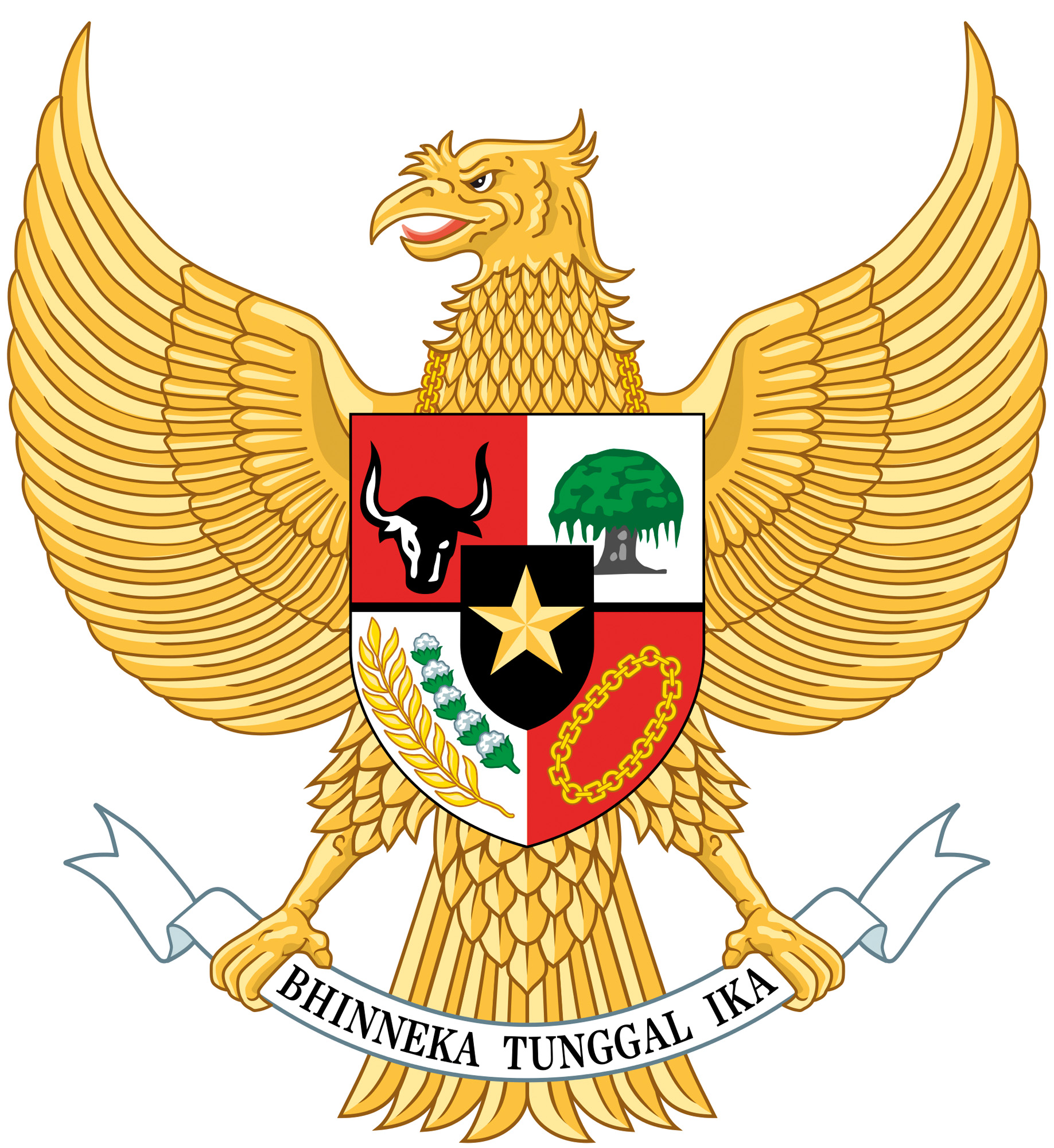
Indonesia’s Garuda differs largely from the legendary depictions of Garuda. It is a Javanese eagle and not an anthropomorphic figure such as in mythology. Its face is stern and looks to the side, emphasizing its strength as a national symbol. More significantly, what the bird is carrying in its claw is not the elixir of immortality (amerta). It is the motto of the Indonesian state: Bhinneka Tunggal Ika –Unity in Diversity.
The meaning of the motto is clear: despite being a largely Muslim country, Indonesians stand together despite their many differences. It is derived form an old, pre-Islamic Javanese piece of literature, translated to English as saying, “the essence of Buddha and Shiva are of different substance; they are different indeed, but how can they possibly be separated; Buddhism and Shivaism are different but one; they are two but one, because the truth cannot become two.” This reference to an ancient concept of tolerance reminds the nation to be peaceful and to embrace, in kindness, their differences.
On Indonesia’s Garuda, a coat of arms is embedded on its chest. What does one see? Five elements: a central star, a chain, a banyan tree, a bull’s head and two twigs, one of rice, the other for cotton. Together they symbolize the five principles of the Indonesian nation, the Pancasila.
(1) The star represents the Oneness of God; its 5 tips refer the official religions in the country: Islam, Catholicism, Protestantism, Hinduism and Buddhism. Although now Confucianism has also been accepted. This implicitly underlines that the state, even though not formally secular, is officially neutral in matters of religious.
(2) The chain is the symbol of humanitarianism, a just and civilized humanity.
(3) The banyan tree represents national unity. A sacred tree with deep connections, reaching down into the deepest layers of Indonesian identity. In Java, banyan trees used to be planted on the main square of the kingdom’s capital city. In Bali, banyan trees are thought to be “living beings”. They each have a shrine addressed to its soul.
(4) The bull (banteng) represents the principle of democracy. It is a symbol of strength, but also seen as a social animal.
(5) The two twigs of rice and cotton are the principles of social justice, representing sustenance and livelihood.
To me, this complex symbolic system is Indonesia’s most important contribution to modern humanity. It encourages the idea that identity is indeed multi-layered. Being Indonesian means there is no contradiction in being a Javanese Christian, or perhaps a Muslim Batak, with Chinese blood. In a world where most multi-cultural states are wrecked by unending conflicts about one’s loyalty toward one’s state, religion and ethnicity, Indonesia stands as an island of peace, and is proud to be so.!



